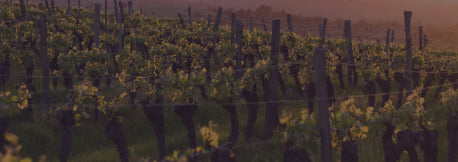The State University of New York College of Environmental Science and Forestry (SUNY-ESF) presents ‘SX67’, a fastgrowing shrub willow. ‘SX67’ produces high biomass yields across a variety of sites. It is disease and beetle resistant, and is well suited for biomass plantings and privacy hedges. Download the full article below.
Read MoreLatests Post
The State University of New York College of Environmental Science and Forestry (SUNY-ESF) presents ‘SX64’, a fastgrowing shrub willow. ‘SX64’ is a high-yielding variety that is disease and beetle resistant. It grows well on a variety of sites and is well suited for biomass plantings and privacy hedges. Download the full article below.
Read MoreThe State University of New York College of Environmental Science and Forestry (SUNY-ESF) presents ‘S25’, a member of the North American native species, Salix eriocephala. ‘S25’ is moderately disease resistant, and a high biomass producer, so it is well suited for streambank restoration, riparian buffers, privacy hedges, biomass plantations, and ornamental plantings. Download the full article ...
Read MoreThe State University of New York College of Environmental Science and Forestry (SUNY-ESF) presents ‘S365’, a pussy willow variety of shrub willow. ‘S365’ is a hybrid variety that is disease resistant, produces multiple small stems, and is well suited for streambank restoration, riparian buffers privacy hedges and in ornamental plantings. Download the full article below.
Read MoreThe State University of New York College of Environmental Science and Forestry (SUNY-ESF) presents ‘SV1’, a fastgrowing shrub willow. ‘SV1’ produces high biomass yields across a variety of sites, is disease resistant and moderately pest resistant, and is well suited for biomass plantings and privacy hedges. Download the full article below.
Read MoreThe process of maintaining a stream or river’s natural riparian buffer is the best way to protect against erosion, as well as chemicals from entering the water flow. The buffer is used to stabilize property and slow the speed of eroding banks. The qualities of water, as well as groundwater filtration are increased due to this maintenance process. Cooler water and air temperatures also result th...
Read MoreTRAXYS – TRAXYS is a world wide developer that has immediate plans to convert coal plants in the Upper Peninsula of Michigan to biomass energy plants. This spring a 30 acre demonstration field of shrub willow was planted in Marquette, Michigan. Considering planting an additional 1000 acres in the spring of 2011 with a long term goal of 25-50K acres. The results to date have been very encouragin...
Read MoreVernon-Verona-Sherrill (VVS) High School is the host of a 2.5 acre demonstration trial of shrub willow bioenergy crops planted in cooperation with Cornell University, SUNY College of Environmental Science and Forestry (SUNY-ESF), Cornell Cooperative Extension of Oneida County and Double A Willow. Eight willow varieties were machine-planted in the spring of 2009 and will be cut back in the fall....
Read MoreThe first project implemented under Chautauqua County’s Lakes and Waterways funding program has weathered the summer storms on Goose Creek in Busti. Coordinated by the Chautauqua County Soil and Water Conserva- tion District, the project’s goal was to stabilize 250 feet of severely eroding streambank, reducing the quantity of sediment entering Chautauqua Lake and the Goose Creek boat channel. “...
Read More

